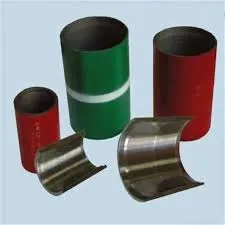- Afrikaans
- Albanian
- Amharic
- Arabic
- Armenian
- Azerbaijani
- Basque
- Belarusian
- Bengali
- Bosnian
- Bulgarian
- Catalan
- Cebuano
- Corsican
- Croatian
- Czech
- Danish
- Dutch
- English
- Esperanto
- Estonian
- Finnish
- French
- Frisian
- Galician
- Georgian
- German
- Greek
- Gujarati
- Haitian Creole
- hausa
- hawaiian
- Hebrew
- Hindi
- Miao
- Hungarian
- Icelandic
- igbo
- Indonesian
- irish
- Italian
- Japanese
- Javanese
- Kannada
- kazakh
- Khmer
- Rwandese
- Korean
- Kurdish
- Kyrgyz
- Lao
- Latin
- Latvian
- Lithuanian
- Luxembourgish
- Macedonian
- Malgashi
- Malay
- Malayalam
- Maltese
- Maori
- Marathi
- Mongolian
- Myanmar
- Nepali
- Norwegian
- Norwegian
- Occitan
- Pashto
- Persian
- Polish
- Portuguese
- Punjabi
- Romanian
- Russian
- Samoan
- Scottish Gaelic
- Serbian
- Sesotho
- Shona
- Sindhi
- Sinhala
- Slovak
- Slovenian
- Somali
- Spanish
- Sundanese
- Swahili
- Swedish
- Tagalog
- Tajik
- Tamil
- Tatar
- Telugu
- Thai
- Turkish
- Turkmen
- Ukrainian
- Urdu
- Uighur
- Uzbek
- Vietnamese
- Welsh
- Bantu
- Yiddish
- Yoruba
- Zulu
what are the differences between casing and tubing?
Differences Between Casing and Tubing in Oil and Gas Industry
In the oil and gas industry, the terms casing and tubing refer to two distinct types of piping used throughout the drilling and production processes. Both are critical components in the completion of a well, but they serve different purposes and are designed to handle different aspects of the well's operations. Understanding the nuances between casing and tubing is essential for professionals in the field, as it affects everything from drilling efficiency to production safety.
Casing The Structural Support
Casing is a series of steel pipes that are inserted into the wellbore after drilling has taken place. Its primary function is structural support. Casing maintains the integrity of the wellbore, prevents the walls from collapsing, and isolates different formation layers to avoid contamination and unwanted fluid influx.
Once the well is drilled to a certain depth, casing is installed in stages, starting from the surface and moving deeper into the well. Each section is cemented in place to provide stability and to seal off any porous rock formations that could lead to fluid migration between layers. There are several types of casing
1. Surface Casing The first casing run, installed shortly after drilling begins. It protects shallow aquifers and the surface environment. 2. Intermediate Casing This is installed after surface casing and is designed to protect the well from deeper, high-pressure zones. 3. Production Casing The final casing run that allows for the extraction of oil and gas. It is cemented to provide stability and isolation before production tubing is installed.
Tubing The Conduit for Production
In contrast, tubing refers to a smaller diameter pipe that is installed inside the casing. Its primary purpose is to transport the hydrocarbons (oil and gas) from the reservoir to the surface. Tubing is solely used for production and can be removed and replaced as needed, making it more adaptable compared to casing.
Tubing is made of different materials, including carbon steel and high-strength alloys, depending on the conditions of the reservoir, such as temperature and pressure. The diameter of the tubing is typically smaller than that of the casing, which allows for easier handling and installation.
what are the differences between casing and tubing?

Key Differences
1. Functionality The most significant difference between casing and tubing is their functions. Casing provides structural support and seals the wellbore, while tubing serves as the conduit for hydrocarbon flow to the surface.
2. Installation Casing is installed first and is cemented in place, providing a stable structure for the well. Tubing is installed afterward and can be easily removed or replaced without affecting the casing.
3. Diameter and Design Casing pipes are generally larger in diameter than tubing pipes. This difference in size is part of their design, which caters to their distinct functions—casing must accommodate potential pressure differences from formations, while tubing focuses on efficient fluid transfer.
4. Material Both casing and tubing can be made from various materials, but they are often selected based on different criteria. Casing must withstand external pressures and environmental conditions, while tubing must be resistant to corrosion and wear from the hydrocarbons passing through.
5. Pressure and Flow Control Casing systems are designed to handle the pressures from surrounding rock formations, while tubing systems manage the flow rates of oil and gas as they move to the surface. The design and engineering of each are tailored to these various demands.
6. Maintenance Tubing requires more frequent maintenance than casing since it is subject to wear and tear from the production process. Casing, being a more permanent structure, generally requires less maintenance, though it must be monitored for integrity over the life of the well.
Conclusion
In summary, the differences between casing and tubing in the oil and gas industry are evident in their functions, installation processes, sizes, materials, and maintenance requirements. While both components are essential for the successful drilling and production of oil and gas, understanding their unique roles can significantly enhance well management practices. Properly utilizing casing and tubing not only ensures operational efficiency but also contributes to the safety and environmental integrity of oil and gas extraction processes.
-
Tubing Pup Joints: Essential Components for Oil and Gas OperationsNewsJul.10,2025
-
Pup Joints: Essential Components for Reliable Drilling OperationsNewsJul.10,2025
-
Pipe Couplings: Connecting Your World EfficientlyNewsJul.10,2025
-
Mastering Oilfield Operations with Quality Tubing and CasingNewsJul.10,2025
-
High-Quality Casing Couplings for Every NeedNewsJul.10,2025
-
Boost Your Drilling Efficiency with Premium Crossover Tools & Seating NipplesNewsJul.10,2025







